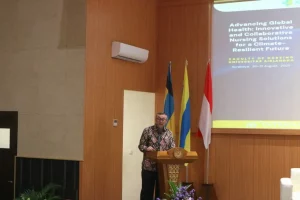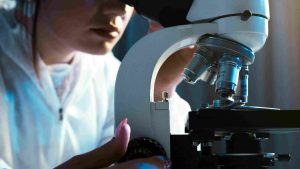The molecules known as polycyclic aromatic hydrocarbons (PAHs) have garnered significant attention as environmental priority pollutants due to their inherent mutagenic, carcinogenic, and teratogenic characteristics. Although many polycyclic aromatic hydrocarbons (PAHs) have been identified as priority pollutants by the European Community and the Environmental Protection Agency, many concerns remain unresolved about the effects of PAHs when they go from the environment to our diet.
Even though there has been much research on PAHs in air particles, sediments, and water samples from the environment, there is still a significant gap in the evaluation of PAHs in food samples. Especially fruits and vegetables consumed in high quantities. Thus, the Food safety and Quality Division (FSQD) must evaluate the presence, profile, and concentration of PAHs in fruit and vegetables. This can involve the development of guidelines for farmers and food processors to minimize the accumulation of PAHs in crops by using organic farming practices. If the hazardous effects of PAHs in food crops are overlooked, they can seriously affect public health, including an increased risk of cancer, developmental and reproductive disorders, and immune system suppression.
The methodologies that can be applied to detect the PAHs were encompass dispersive micro solid phase extraction (D-µ-SPE), micro solid phase extraction, solid phase extraction (SPE), solid phase microextraction (SPME), and dispersive liquid–liquid microextraction. D μ-SPE is a miniature extraction process based on micro or nanosorbent dispersion in the sample solution and solid sorbent separation by centrifugation, filtering, or external magnetic field.
This SPE-based technique requires a small amount of solid dispersed in a sample solution containing the target analytes without conditioning before analyzing the eluate by mass spectrometry (MS), liquid chromatography-mass spectrometry (LC/MS), and high-performance liquid chromatography (HPLC). Selecting a suitable sorbent requires careful consideration, as the composition of the extracted analytes largely determines the sorbent to be used. Popular sorbent options for D-µ-SPE include materials based on silica, such as C 18, MCM-41, and SBA-15. However, naturally- derived silica is more sustainable due to its lower production cost, renewable, widely accessible, and being physiochemically modified for D-u-SPE applications, unlike conventional silica, whose manufacture is more energy-intensive (>1700◦C). Silica-based materials are excellent sorbents in D-u-SPE due to their nanoparticle sizes, meso porous structure, and thermal and mechanical stability.
Other factors include a high surface area, highly regular pore distribution, large sorption capacity, and tunability. The hydroxyl groups can react with various functional groups to generate amine, thiol, or carboxyl groups, while the silanol groups can be functionalized in various ways. Its feasibility as an adsorbent for PAH extraction remains unreported. Hence, this study aims to assess the performance of an oil palm frond- based silica (OPF-SiO2) composite as a sorbent in the D-µ-SPE technique for extracting and determining PAHs from Psidium guajava prior to HPLC-DAD. The method proposed here aims to enhance the greenness of the procedure mentioned above. OPF-SiO2 sorbent for D-µ-SPE envis ages a sustainable and eco-friendlier approach to repurposing biomass into value-added silica-based sorbent materials.
The study used four PAHs (naphthalene, fluorene, anthracene, and pyrene) as the model analytes. The evaluation of the elution solvent, extraction time, sorbent dosage, and desorption time as variables that impact the efficacy of the extraction process was conducted through the utilization of the one- variable-at-a-time (OVAT) methodology. Additionally, analytical studies were enhanced by combining experimental and theoretical research, in which the latter involves computational methods based on force field theory to have a deeper understanding at molecular levels of the relation between the molecular orbital properties of OPF-SiO2 and their interaction energy toward PAH molecules.
Furthermore, the greenness of the analytical methodology was assessed through the recently proposed AGREE metrics. This study offers a minimization, rapid, sensitive, and efficient method to detect trace concentrations in various matrices and overcome the shortcomings of conventional liq uid–liquid extraction (LLE) and solid phase extraction (SPE) methods. It is not only implementing 12 green analytical practices but is also in line with the Natural Green Technology Policy, which conserves natural resources and minimizes the negative impacts of human activities.
Methods
A Dionex HPLC system (Dionex Softron GmbH, Germering, Ger many) with a diode array detector was employed to determine the PAHs. Chromatographic separation was carried out using Acclaim Polar Advantage II (PA2), C18 (5 μ m, 4.6 x 150 mm) from Thermo Fisher Scientific (US) at a temperature of 40 ⁰C. The separation was performed using a gradient mobile phase consisting of ultrapure water, methanol, and acetonitrile (A: B: C), with an initial composition of 95:5:0 for 4 min, before changing to 10:10:80 for 3 min. The composition was again changed to 20:20:60 for 3 min. The flow rate of the mobile phase was fixed at 1.0 mL min , and 20 μ L of the sample was injected into the system. The detection wavelength for NAP was 220 nm, 240 nm for PYR, 254 nm for ANT, and 263 nm for FLU.
Results
This study developed a new OPF-SiO2-D-µ-SPE method in conjunction with an HPLC-DAD method that used a low-cost adsorbent, OPF- SiO2, to determine selected PAHs in fruit samples. Being used without modification, OPF-SiO2 can extract PAHs from Psidium guajava with low LODs (2.33–4.90 µg kg-1), wide LRs, good recovery (95.05 to 108.88 %), and rapid and complete extraction (36 min). Important extraction parameters were investigated and optimized in detail.
Furthermore, the use of OPF-SiO2 in the D-µ-SPE technique proved to be environmentally friendly, effective, sensitive, and cost-effective for determining four PAHs in a fruit sample. Results of the in-silico inves tigation proved that the highest adsorption energy for selected PAHs (ANT) and the OPF-SiO2 composite interaction (-13.976 kcal mol-1) agreed with the study’s experimental observations. It is also expected that OPF-SiO2 has great potential for the reliable quantification of other types of organic pollutants with heavy groups of PAHs in food. The results obtained from the green profile evaluation provided substantial
evidence to support the assertion that the proposed methodology adhered to the fundamental principles of green analytical chemistry.
Author: Yanuardi Raharjo, Ph.D.
Detailed information from this research can be seen in our article at: https://doi.org/10.1016/j.microc.2023.109885
Nur Husna Zainal Abidin, Wan Nazihah Wan Ibrahima, Yanuardi Raharjo, Hamed Rashidi Nodeh, Roswanira Abdul Wahab, Muhamad Kamil Yaakob, Noorfatimah Yahaya, Sazlinda Kamaruzaman, Nursyamsyila Mat Hadzir, Nor Suhaila Mohamad Hanapi
Microextraction experimental and forcefield theoretical modelling study on exploring a silica-enriched oil palm frond biomass for the determination of polycyclic aromatic hydrocarbons in Psidium guajava, Microchemical Journal, 2024; 197; 109885









